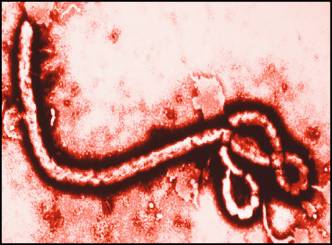
The most comprehensive analysis yet of breast cancer has revealed that one of the most deadly subtypes is genetically more similar to ovarian tumors than to other breast cancers.
The findings suggest that most basal-like breast tumors and ovarian tumors have similar genetic origins and potentially could be treated with the same drugs, said the study's co-leader Matthew J. Ellis, MD, Phd, the Anheuser-Busch Chair in Medical Oncology at Washington University School of Medicine in St. Louis.
Basal-like tumors account for about 10 per cent of all breast cancers and disproportionately affect younger women and those who are African-American.
The new research is part of The Cancer Genome Atlas project, which brings together leading genetic sequencing centers, including The Genome Institute at Washington University, to identify and catalog mutations involved in many common cancers. The effort is funded by the National Institutes of Health (NIH).
"With this study, we're one giant step closer to understanding the genetic origins of the four major subtypes of breast cancer," said Ellis, who treats breast cancer patients at the Siteman Cancer Center at Barnes-Jewish Hospital and Washington University.
"Now, we can investigate which drugs work best for patients based on the genetic profiles of their tumors. For basal-like breast tumors, it's clear they are genetically more similar to ovarian tumors than to other breast cancers. Whether they can be treated the same way is an intriguing possibility that needs to be explored," he added.
Currently, for example, basal-like breast tumors often are treated like many other breast cancers, using anthracycline-based chemotherapy. But another of Ellis's studies recently showed that women with basal-like tumors don't benefit from these drugs, which also have severe side effects.
At the very least, he said, the new data indicates that clinical trials should be designed to avoid the use of these drugs in basal-like tumors.
The study confirmed the existence of four main subtypes of breast cancer: Luminal A, luminal B, HER2 and basal-like. The latter includes most triple-negative breast tumors, so-named because they lack receptors for the hormones estrogen, progesterone or human epidermal growth factor 2 (HER2). These tumors often are aggressive and do not respond to therapies that target hormone receptors or to standard chemotherapies.
Across the four subtypes, mutations in only three genes-TP53, PIK3CA and GATA3-occurred in more than 10 percent of patients' tumors. But, the scientists found unique genetic and molecular signatures within each of the subtypes.
Their findings add to the growing body of evidence suggesting that tumors should be cataloged and treated based on the genes that are disrupted rather than the location in the body.
In general, compared to the other subtypes, basal-like and HER2 tumors had the highest mutation rates but the shortest list of significantly mutated genes. These genes are thought to be major drivers of cancer progression. For example, 80 percent of basal-like tumors had mutations in the TP53 gene, which have been linked to poor outcomes. About 20 percent of the tumors also had inherited mutations in BRCA1 or BRCA2 genes, which are known to increase the risk of breast and ovarian cancer.
"This suggests that it only takes a few hits to key genes that drive cancer growth," Mardis explains.
A high frequency of TP53 mutations also occurs in ovarian cancer, the researchers noted. Overall, the genetic profiles of basal-like and ovarian tumors were strikingly similar, with widespread genomic instability and mutations occurring at similar frequencies and in similar genes.
Finding new drug targets for basal-like breast tumors is critical, and the research suggests that patients with mutations in the BRCA genes may benefit from PARP inhibitors or platinum-based chemotherapy, which are already used to treat ovarian cancer.
The findings have been published online in Nature.














